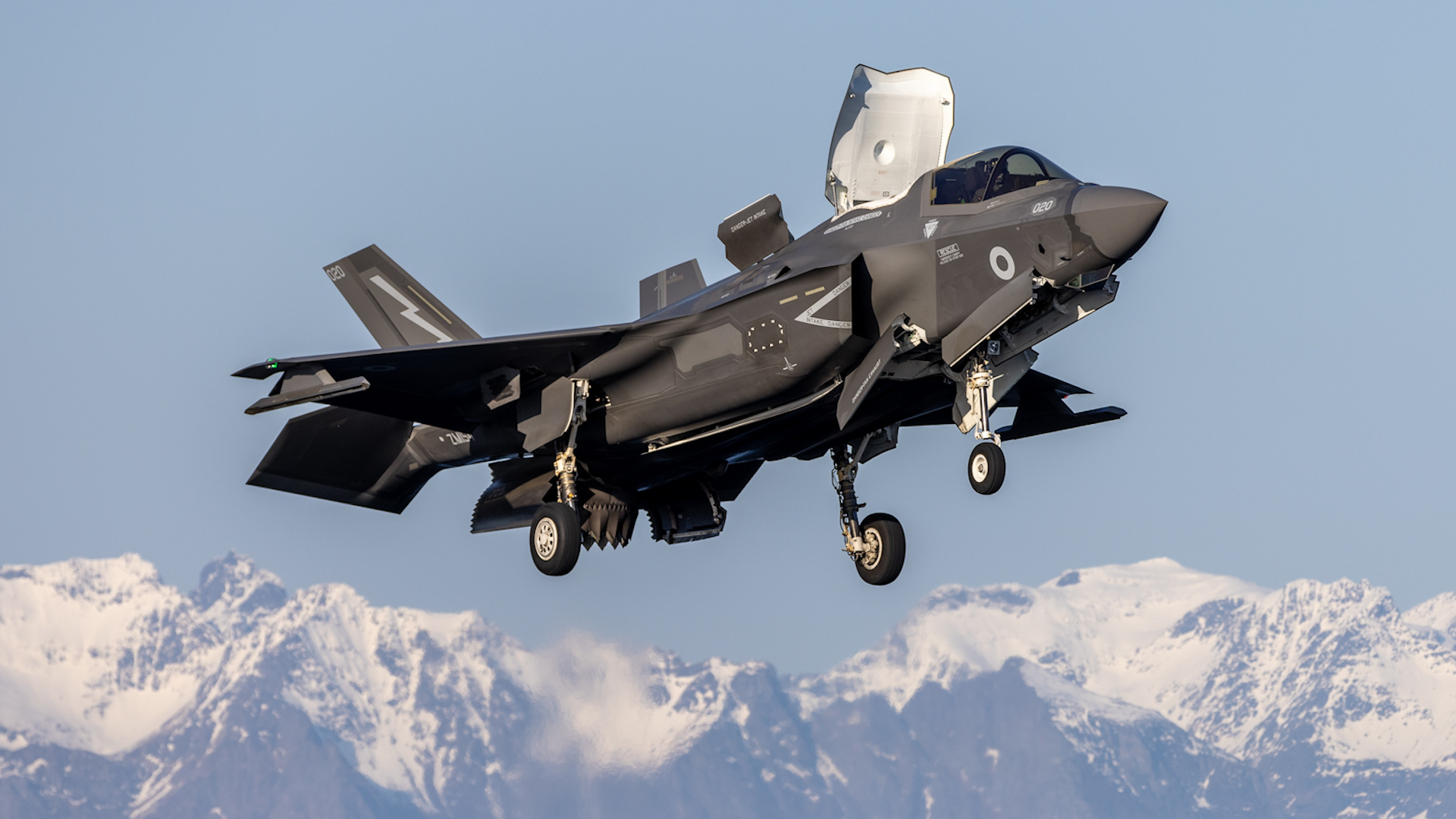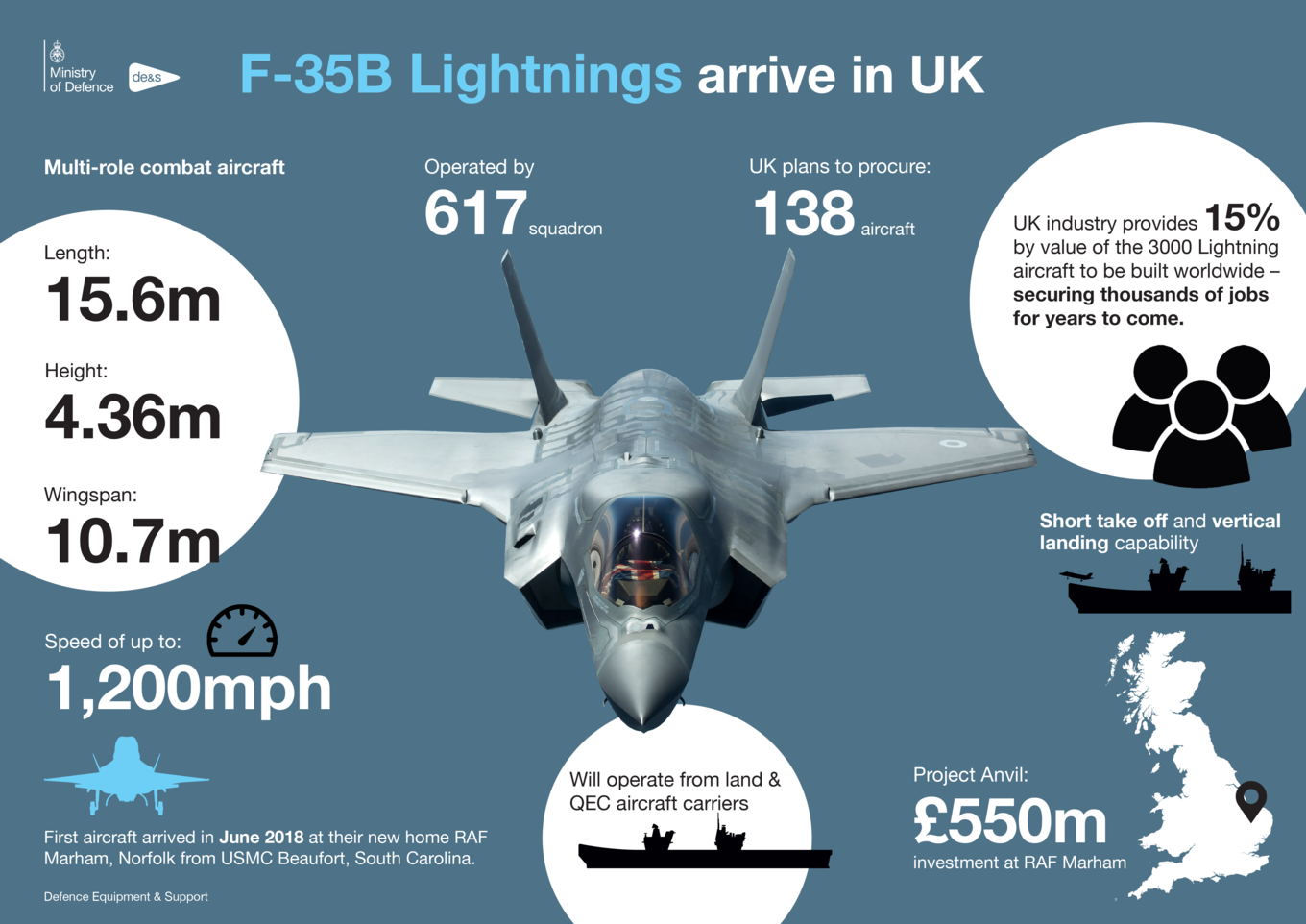
The F-35B: What you need to know about the UK's fifth-generation Lightning

The F-35B Lightning is a multi-role aircraft, capable of conducting air-to-surface, electronic warfare, intelligence-gathering and air-to-air missions simultaneously.
The Lightning Force, based at RAF Marham and made up of RAF and Royal Navy personnel, overseas operations involving the UK's F-35B aircraft.
So far the UK has received 33 of the fifth-generation fighter jets out of the 48 to be delivered by the end of 2025, which is due to increase to a full operating capacity of 74 aircraft by 2033.
For the first time, RAF F-35Bs are taking part in a Nato air policing mission, defending the alliance's airspace in the Arctic region.
In March, the combat aircraft joined Nato's biggest exercise since the Cold War, taking off and landing from the deck of HMS Prince of Wales.
There are three main variants of the F-35, A, B and C, with all British versions being the B.
In US service, the F-35 is known as the Lightning II, following on from the Second World War-era Lockheed P-38 Lightning, while in UK service it's just called the Lightning.
Here's a detailed look at the F-35 Lightning – the most advanced aircraft to enter service with Britain's Armed Forces.
How much does an F-35 cost?
In March 2020, the then-defence minister Jeremy Quin stated the price of an F-35B was $115m - about £88.8m when using UK Government March 2020 exchange rates - covering its airframe and engine costs.
He said this figure represented a 24% price reduction from the first aircraft ordered, with the expectation that the downward trend regarding the F-35's cost would continue.
Specifications
The F-35B measures 15.6m in overall length, has a wingspan of 10.7m and a height of 4.36m.
Its top speed comes in at 1.6 Mach, or 1,200mph,. This is 1.6 times the speed of sound – and its maximum thrust tops 40,000lb.
The jet has a combat radius of 833km.
The Lightning has a max G rating of 7G, which can be compared to the G-force felt in Apollo 16 on its re-entry to Earth (7.19g).
A lift fan mounted behind the F-35B's cockpit allows the jet to operate with short take-off and vertical landing (STOVL) capabilities.
The single-seat, single-engine fighter is fitted with integrated sensors, and the warplane can be used to conduct missions and operations from the Royal Navy's Queen Elizabeth-class aircraft carriers as well as from land.
Unlike earlier generation fighter jets, the Lightning is designed to carry its weaponry internally, decreasing drag and its radar signature, boosting its stealth capabilities.
However, in cases where firepower is more important than stealth, it can carry munitions externally, increasing the payload in what is known as Beast Mode.
Depending on missions, the typical armament on the F-35B includes a 25mm cannon, two bays for air missiles and a further two for bombs up to 450kg.
There are also two wingtip mounts for air-to-air missiles and four for air-to-surface or ground missiles.
The jet itself is made by many different companies.
Lockheed Martin is the main contractor, with BAE Systems making about 15 pieces of each airframe and Rolls-Royce making the lift fan.
Life on board HMS Queen Elizabeth
The Lightning provides fifth-generation carrier-strike capabilities to the Royal Navy's two biggest carriers – HMS Queen Elizabeth and HMS Prince of Wales.
Rather than the traditional catapult launch, the F-35B takes off from the carriers via a ski jump ramp.
The jet is capable of two types of landing – vertically onto the deck, and also through a shipborne rolling vertical landing, which uses forward airspeed, and allows the aircraft to bring back several thousand pounds of extra weight to the ship.
In 2021, F-35s embarked onHMS Queen Elizabeth for the Carrier Strike Group 21 (CSG21) deployment werescrambled a number of times in response to Russian aircraft.
In the earlier stages of the deployment while in the eastern Mediterranean, F-35s were intercepting Russian aircraft almost daily.
The jets were also used to fly combat missions against the so-called Islamic State in Iraq and Syria, taking off and landing from HMS Queen Elizabeth.

Who operates the F-35?
The Royal Air Force started using the jets in missions in 2019.
The Lightning Force, made up of RAF and Royal Navy personnel, is based at RAF Marham in Norfolk and oversees operations involving the UK's F-35B aircraft.
According to the Royal Air Force, the following British squadrons fly the Lightning:
- 17 Squadron, which is stationed at California's Edwards Air Force Base and has been responsible for operational testing of the UK's F-35Bs since 2014
- 617 Squadron, the first frontline F-35 unit, also known as the Dambusters, based at RAF Marham in Norfolk
- 207 Squadron, which is the UK's F-35 Lightning training squadron, also based at Marham
- 809 Naval Air Squadron, which was stood up in 2023, was the first Royal Navy formation to fly the F-35.
The F-35 programme is being rolled out internationally across the US, the UK, Italy, the Netherlands, Turkey, Canada, Australia, Denmark and Norway, among others.
Israel claimed to be the first nation to use the aircraft in a combat situation, while the US conducted its first airstrike using the F-35B in 2018.










